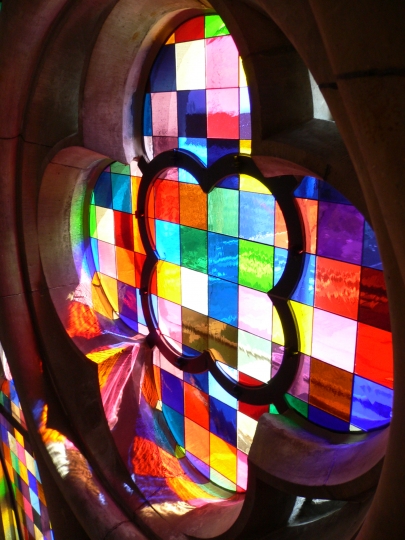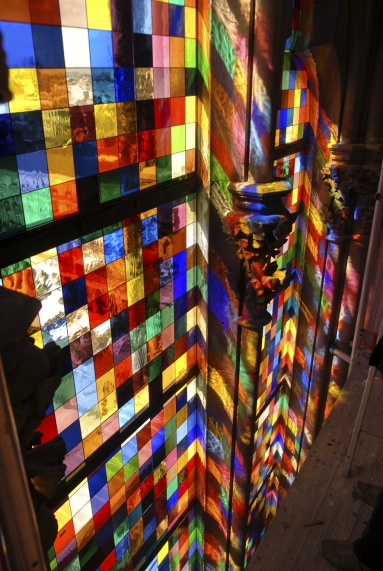
"Art is not a substitute religion: it is a religion (in the true sense of the word: 'binding back', 'binding' to the unknowable, transcending reason, transcendent being). But the church is no longer adequate as a means of affording experience of the transcendental, and of making religion real – and so art has been transformed from a means into the sole provider of religion: which means religion itself".
Gerhard Richter's Dom Window

"It is an overwhelming abundance of colour; it is a symphony of light". -Josef Sauerborn-
Gerhard Richter designed the (106 square meters/1140 square feet) work to replace the original window, destroyed by bombs in World War II. As a starting point, he used his own 1974 paintings
To create that piece Richter devised a mathematical formula to systematically mix permutations of the three primary colours and gray. The Cologne window is made of 11,500 four-inch "Pixels" cut from original antique glass in a total of 72 colours.
Why not 4,096, you would ask. It turns out there are stained glass-smart colours. Some hues in Richter's initial design were either historically inaccurate or too pale — they would have outshone the squares around them. (the window is in the south wall of the cathedral, thus catching lots of sunlight) So the artist modified his palette to include only colours with a suitably archaic cast. Because it's fine for a church window to look like it's been designed by a computer, as long as it's a computer with a gothic sensibility.

After he had unveiled his "Domfenster", on August 25, 2007, Richter declared that he was happy the project had been a success, particularly as, unlike his other work, it isn’t intended to hang for a short time but is to be a "window for eternity."
Cologne's gothic cathedral has been a UNESCO World Heritage Site since 1996 and was recently voted Germany's most popular tourist landmark. But many locals lamented the fact that the southern window had consisted of simple unadorned glass ever since the original stained-glass window was destroyed during World War II.
The cathedral decided to replace the window with a new design but plans for a more traditional figurative window were rejected by the cathedral in favour of Richter's abstract design.

Richter, has lived and worked in Cologne since the early 1980s and although the artist - who is one of the world's most expensive living artists - waived any fee, the costs of materials and mounting the window came to around €370,000 ($506,000). However the costs were covered by donations from more than 1,000 people.
Pictures by: Derix.com
To go to the Derix glassstudios where Richter's window was created: